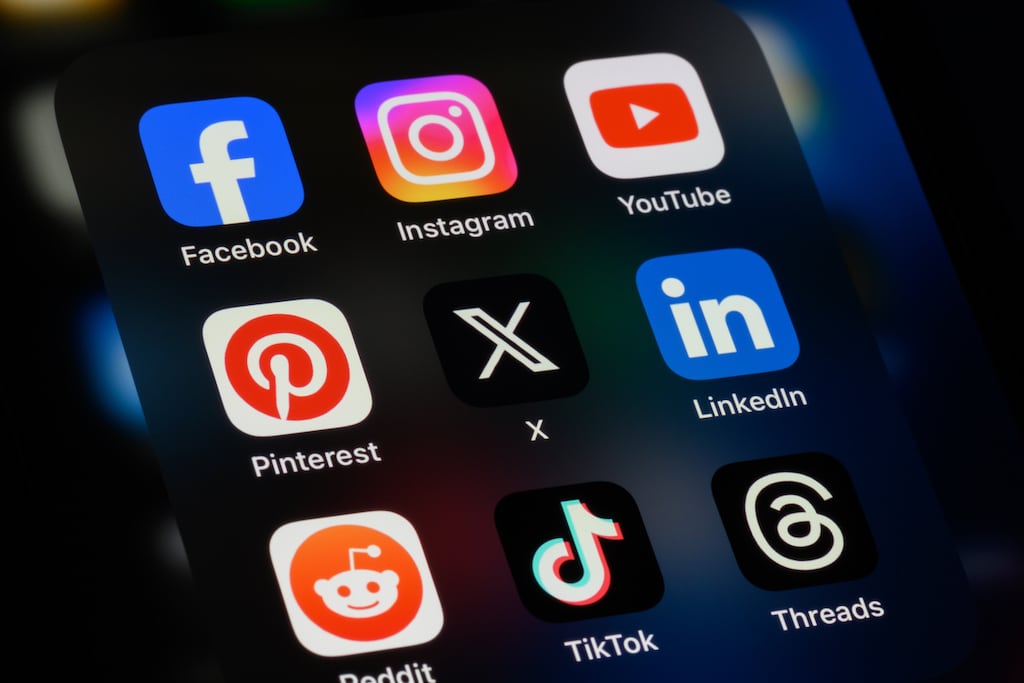In recent years, working as both an education support worker in further education and a special needs assistant in various post-primary mainstream classrooms, I have noticed the powerful impact technology has had on our students. The benefits are immense – yet the risks are alarming.
The recent announcement by the Minister for Education on plans to ban mobile phones from schools really had me listening in.
We know now that our children’s constant access to unlimited technology is perhaps the greatest experiment in adolescence of all time. Remove phones from school we must, unless medically required. However, I believe phones are only a small part of the problem.
Many second level or further education colleges are moving towards a laptop or tablet per student with amazing software that organises assignments and lessons, teaching wonderful administration skills along the way and making learning fun. It is part of life today – there is no going back.
READ MORE
Where students have their own device, schools use technology partners for safe management and ongoing support to manage access, with social media and addictive apps rendered inaccessible. Many young people are, however, a step ahead of us.
We adults rarely switch off; we’re kidding ourselves if we think our students can too through willpower alone
Unwelcome and potentially harmful behaviours can occur with individual devices in schools where pupils have constant access to a camera and editing suite. Device distraction is clearly an issue in both post primary and third level.
Working within the heart of the class, often towards the back, I’ve seen multiple screens on many things other than the lesson. The art of the “quick flick” back to the work page is done at lightning speed. Observing the endless pull of internet distraction is exhausting.
It is a sad fact that the compulsion to be online and the tension with resisting it are very much present in a learning environment, with or without phones. So much of a student’s energy can be spent doing something else on their computer and trying not to get caught. The skill of staying present with the work assigned is being tested.
I am not judging students here – I need to constantly work on this myself. We adults rarely switch off; we’re kidding ourselves if we think our students can too through willpower alone.
In the US in 2020, for example, a senior school board member was called out for supposedly internet shopping during a very important educational meeting at a Baton Rouge high school.
It appears many of us have a problem staying with the lesson when there are so many other choice just a click away.
[ Do we understand what the Irish education system is doing to our young people?Opens in new window ]
What is an acceptable distraction on a device in school? There are seemingly innocent interests like Pinterest, puzzles and a surprisingly popular one is zooming in on Google Earth.
Then there are easily accessible sites such as YouTube, sports matches, newsfeeds and for those who seem to find a loophole in the protection software, streaming channels.
How do I know? I got to stand at a viewpoint teachers simply can’t be at all of the time. They are up front doing their job. I’ve been lucky enough to work with some of the best teachers out there with interesting, active lessons and it is not fair that they should, at times, have to compete with the constant temptation from their audience to do something else on a screen, pretending to be listening.
I’ve seen students Amazon shopping, gaming (on laptops that haven’t had the school protection applied), making graphics or videos as part of a group joke and some rather serious content that has no place being in a classroom.
Photographing school staff or students is not uncommon and airdropping snapped images to the whole class has happened in a relative’s school. Other support staff have told me about ‘merch’ being created from photographs taken during online learning in 2020. And that’s when this cross pollination of being in class while doing something else really accelerated.
I have observed anxious students who struggle to stay in class, repeatedly opening up the search engine bar several times a minute, perhaps to regulate themselves, checking they are still online.
How do we fix this? I don’t know, but we absolutely do not need to demonise the student.
Maybe we need to educate them on the urge of distraction when they feel uncomfortable or bored. Get them to study it themselves and record their own scores. To understand the temptation to put learning off till later, because in uncomfortable moments we find it easier to be online doing something else than waiting for it to pass.
Schools need to continue to survey staff on what they are facing and re-evaluate what is working and what isn’t. Independent researchers could visit a variety of classrooms and study the reality of impulse control around devices; get the data and learn about the situation from a broad variety of teaching institutions.
Imagine what we might learn if we put some resources into studying how student devices are really used in the classroom? The sooner the better.
- Listen to our Inside Politics Podcast for the latest analysis and chat
- Sign up for push alerts and have the best news, analysis and comment delivered directly to your phone
- Find The Irish Times on WhatsApp and stay up to date











